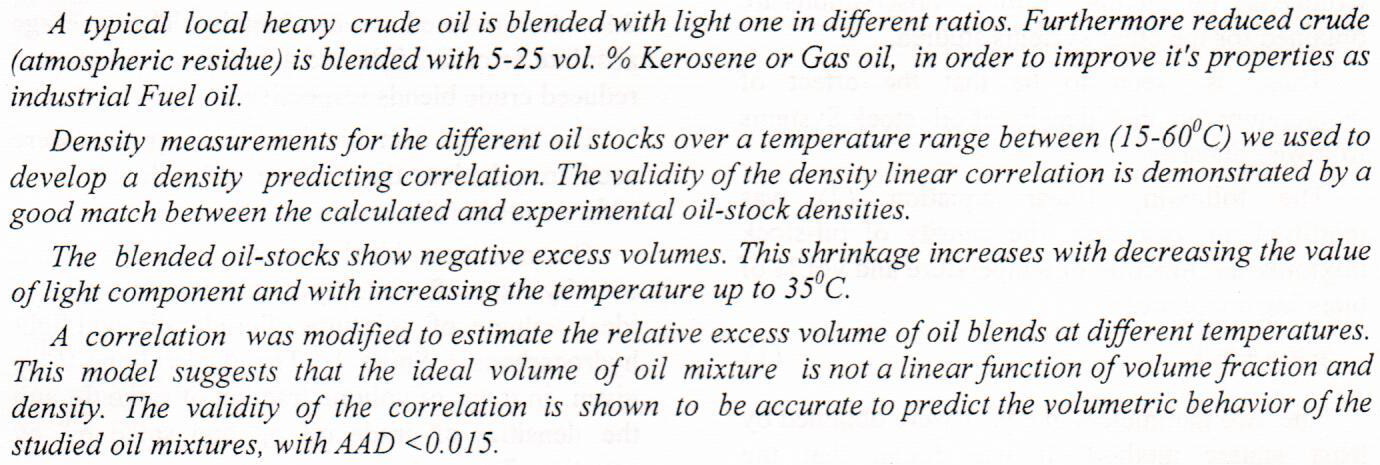
This research concentrate on cultivated Iraqi Agave attenuata dried leaves and roots, because of little studies on this plant especially on the root that lead to the eager of study and comparison of phytochemical constituents between leaves and root. Extraction of bioactive constituents was carried out using several solvents with increasing polarity (n-hexane, ethyl acetate and methanol) by soxhlet apparatus. Steroidal saponins in Agave genus is well documented in many species, lightening the minds in this research on extraction method which is specific for steroidal saponins. Phytochemical screening was done by GC/MS for n-hexane fraction, qualitative and quantitative estimation of several bioactive constituents (caffe
... Show More (7)
(7)
 (1)
(1)
ABSTRACT:
Objectives: The study aims to know the effectiveness of the educational program in the patient’s adherence to medication and diet and to know the relationship between the effectiveness of the education program and their demographic data related to the patient’s age, gender, marital status, education level, occupation, monthly income and residence.
Methodology: A quasi -experimental design study was performed on patient who attended to Gastroenterology and Hepatology Teaching Hospital, from March 2021 to September 2021. The non-probability sampling including 50 patients for case study and 30 patients for control group. The questionnaire consists of 3 parts, part one the socio
... Show Morefour coordinated complexes for divalent metal ions : Mn, Fe, Co, Ni, Cu and Cd have been synthesized using bidentate Schiff base ligand type (NN)formed by the condensation of o-phenylenediamine , p- methylbenzadehyde and furfural in methanol. The ligand was reacted with divalent metal chloride forming complexes of the types :[M(L)Cl2] where : MII=Mn, Fe, Ni, Cu, and Cd . These new compounds were characterized by elemental analysis, spectroscopic methods (FT-IR, U.V-Vis, 1HNMR (for ligand only and atomic absorption) , magnetic susceptibility, chloride content along with conductivity measurement. These studies revealed that the geometry for all complexes about central metal ion is tetrahedral.
A new Macrocyclic Schiff base ligand Bis[4-hydroxy(1,2-ethylene-dioxidebenzylidene) pheylenediamine] [H2L] and its complexes with (Co(II) , Ni(II) , Cu(II) , Zn(II) and Cd(II)) are reported . The ligand was prepared in two steps,in the first step a solution of (o-phenylene diamine) in methanol react under reflux with (2,4-dihydroxybenzylaldeyed) to give an (intermediatecompound) [Bis-1,2 (2,4-dihydroxybenzylediene)pheylinediamine] which react in the second step with (1,2- dichloro ethane) giving the mentioned ligand.Then the complexes were synthesis of adding of corresponding metal salts to the solution of the ligand in methanol under reflux with 1:1 metal to ligand ratio. On the basis of, molar conductance, I.R., UV-Vis, chloride content a
... Show MoreThe aim of this work covers the synthesis and characterization of the new tertra dentate ligand (H4L) containing (N and O) as donor set atoms kind (N2O2) where: H4L=Bis-1,2 (2,4dihydroxybenzylediene phylinediamine . The preparation of ligand contains reaction 2, 4 Dihydroxy benzaldehyde and o-phenylene diamine . Schiff base was reacted with some metal ions in the presence of methanol to give the complexes in the general formula [M (H2L)] where: MII = Co, Ni, Cu, Zn, Cd. All compounds were characterized by spectroscopic methods I.R , U.V.-Vis, metal content and molar conductivity measurements, showed that the complexes are non-electrolyte. The proposed geometry for all of the proposed complexes was a tetrahedral while Ni comp
... Show MoreA new ligand complexes have been synthesis from reaction of metal ions of Mn(II), Co(II), Ni(II), Cu(II), Zn(II), Cd(II), Hg(II), Pd(II) and Pt(II) with schiff base LH. 5-[(2-Hydroxy-naphthalen-1-ylmethylene)-amino]-2-phenyl-2,4-dihydro-pyrazol-3-one, this ligand was characterized by Fourier transform infrared (FTIR), UV-vis, 1H, 13CNMR, and mass spectra. All complexes were characterized by techniques micro analysis C.H.N, UV-vis and FTIR spectral studies, atomic absorption, chloride content, molar conductivity measurements and magnetic susceptibility. The ligand acts as bidentate, coordination through nitrogen atom from azomethin group and deprotonated phenolic oxygen atom. The spectroscopic and analytical measurements showed that
... Show MoreIn this work, Schiff base ligands L1: N, N-bis (2-hydroxy-1-naphthaldehyde) hydrazine, L2: N, N-bis (salicylidene) hydrazine, and L3:N –salicylidene- hydrazine were synthesized by condensation reaction. The prepared ligands were reacted with specific divalent metal ions such as (Mn2+, Fe2+, Ni2+) to prepare their complexes. The ligands and complexes were characterized by C.H.N, FT-IR, UV-Vis, solubility, melting point and magnetic susceptibility measurements. The results show that the ligands of complexes (Mn2+, Fe2+) have octahedral geometry while the ligands of complexes (Ni2+) have tetrahedral geometry.
Aim: To evaluate the cytotoxic activity of newly synthesized a series of novel HDAC inhibitors comprising sulfonamide as zinc binding group and Isatin derivatives as cap group joined by mono amide linker as required to act as HDAC inhibitors. Materials and Methods: The utilization of sulfonamide as zinc binding group joined by N-alkylation reaction with ethyl-bromo hexanoate as linker group that joined by amide reaction with Isatin derivatives as cap groups which known to possess antitumor activity in the designed of new histone deacetylase inhibitors and using the docking and MTT assay to evaluate the compounds. Results: Four compounds have been synthesized and characterized successfully by ART-FTIR, NMR and ESI-Ms. the compounds w
... Show More (1)
(1)
 (19)
(19)
 (19)
(19)
In this work, prepared new ligand namely 5-(2,4-dichloro-phenyl)-1,3,4-oxadiazole-2-(3H)-thion, was obtained from the 2,4-dichlorobenzoyl chloride with hydrazine, after that reaxtion with CS2/KOH in methanol.
